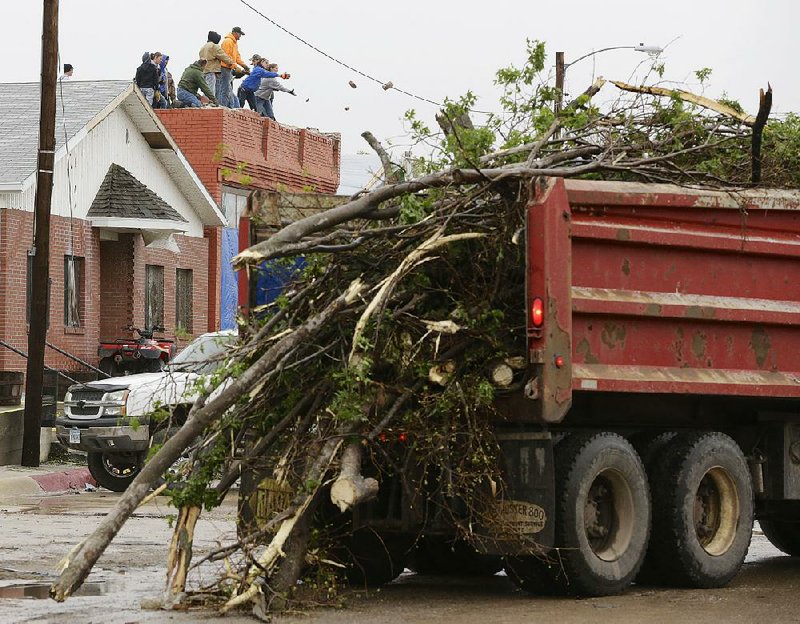DENVER -- Trucks began rolling again across a southern Wyoming artery that had been closed for more than 24 hours, and officials in Nebraska made plans to move some primary polling locations Monday after a powerful spring storm dropped as much as 3 feet of snow on the Rockies and spawned thunderstorms and tornadoes in the Midwest.
Interstate 80, a major east-west truck route, reopened in Wyoming a day after its closure stranded thousands of travelers and truckers. The interstate quickly became crowded with the trucks that had packed rest areas.
Residents in eastern Nebraska were cleaning up from Sunday's thunderstorms and twisters, which ripped roofs off homes and toppled buildings but caused no major injuries.
Numerous tornadoes were reported across at least six Nebraska counties. Trained spotters identified 12-15 likely tornadoes as the storms moved across the state. Nebraska Secretary of State John Gale said Monday that two polling places for today's primary election in Seward County will be relocated because of the damage.
In Colorado, the snow that began falling Sunday caused power failures as it weighed down greening trees.
Among those affected by the power failures was Denver International Airport, where some escalators and elevators temporarily stalled Monday morning. Airport spokesman Julie Smith said a backup generator prevented major problems. At least 27 arriving and departing flights were canceled, but Smith said there were no major delays. Crews were working overnight to deice runways.
The weather appears at fault for at least one fatal crash Sunday on U.S. 285 southwest of Denver.
The highway was one of the worst for accidents during the storm. Two law enforcement cruisers were also hit in less than an hour while responding to other crashes.
Spring is normally the wettest time of year in the Rockies. Although snowfall is common in the mountains in May, significant snowfall at lower elevations such as Denver occurs every five or 10 years, Colorado climatologist Nolan Doesken said. Denver got between 4-7 inches of heavy, wet snow.
In the West, high winds at the bottom of the storm sent dust blowing across Arizona and New Mexico, and the Los Angeles area had been under "red flag" fire warnings, with authorities saying blazes could quickly spread out of control under low humidity, gusty winds and dry conditions.
The storm is the result of a low-pressure system moving east that's colliding with a cold air mass from the north. Although temperatures were expected to drop below freezing Monday night, springlike weather was expected to return to the Rockies by today.
A Section on 05/13/2014

